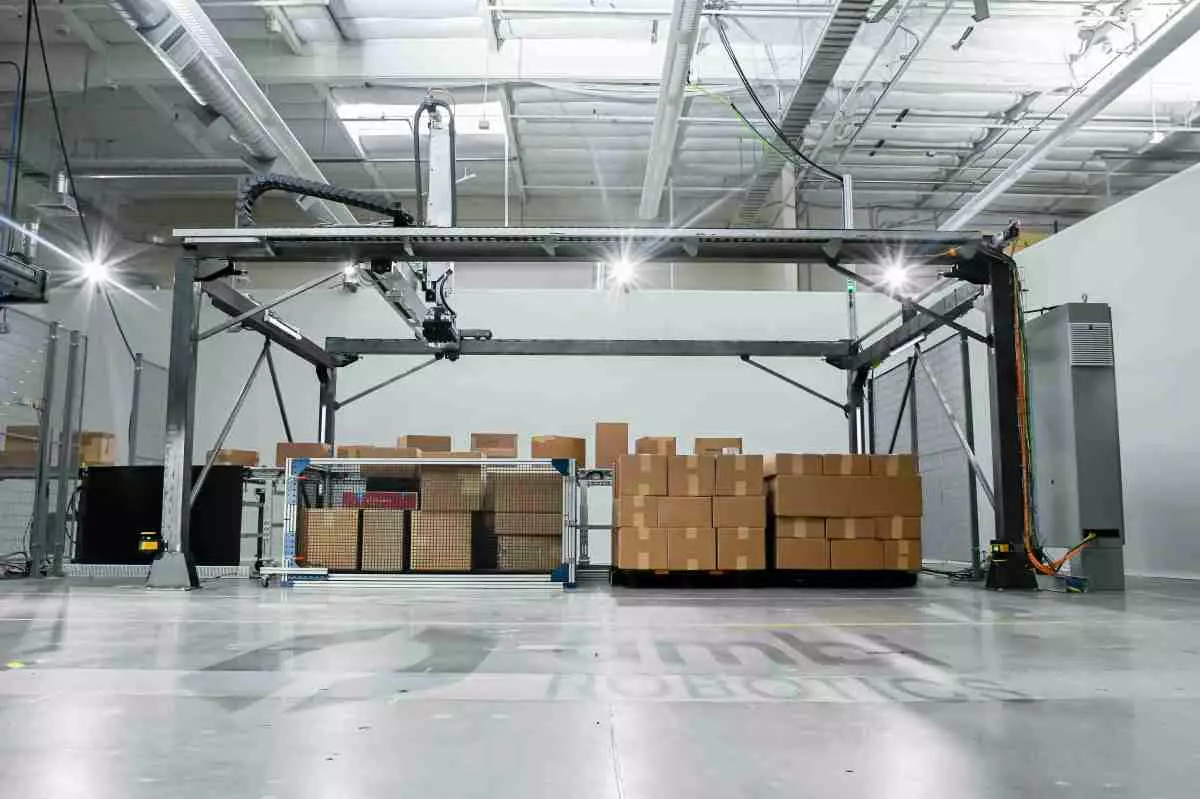In an era where efficiency is paramount in logistics and warehousing, Ambi Robotics, a spinout from the University of California, Berkeley, has emerged as a frontrunner with its groundbreaking solution, AmbiStack. Announced recently, AmbiStack represents a significant advancement in the automation of pallet packing, confronting the longstanding challenges presented by manual labor and older machinery. The original intent of the researchers and the company’s founders, who remain deeply rooted in the ethos of innovation, was to create systems that would not only enhance operational productivity but also prioritize the safety and wellbeing of workers.
Central to the AmbiStack system is an industrial robotic arm, strategically positioned above a conveyor belt. This arm operates with remarkable versatility, moving seamlessly along both the X and Y axes. What sets AmbiStack apart is its sophisticated use of suction cup technology, allowing the robotic gripper to lift and transport boxes of varying shapes and sizes efficiently. Once released from the conveyor belt, these boxes can be meticulously packed into pallets for shipping or storage, conferring significant logistical benefits.
The dual capability of picking and stacking within a single workflow is a hallmark of this invention, responding to the inefficiencies and risks associated with manual labor. Traditionally, warehouses have relied on human workers to perform these tasks—activities that are not only time-consuming but also fraught with risks of injury, especially in an environment that demands accuracy and speed. Older mechanized solutions, such as forklifts, have posed their own set of operational hazards. AmbiStack aims to eliminate these dangers by removing human involvement from these critical stages, creating a safer and more efficient warehouse environment.
What distinguishes AmbiStack in the competitive landscape of warehouse automation is not just its physical architecture, but also the sophisticated AI that underpins its operation. Trained on a massive pool of over 200,000 hours of warehouse data, the AI component equips AmbiStack with the ability to smartly analyze and adapt to the variations in package sizes and configurations. This depth of training allows the system to function effectively in diverse warehouse setups, enhancing its versatility.
Ambi’s approach highlights the importance of integrating cutting-edge hardware and intelligent software, a strategy that enables continuous learning and performance optimization. This innovation is particularly timely, as the ongoing trend toward automation in logistics was significantly accelerated by the circumstances surrounding the COVID-19 pandemic. Companies were not only forced to adapt to a changed marketplace but also to address the critical staffing shortages that followed, emphasizing the relevance of AI-driven solutions.
Pre-sales for AmbiStack have already kicked off, with initial deployments projected for mid-2025. Such timelines reflect both the current demand and Ambi’s commitment to scaling its production capabilities, with plans to increase manufacturing outputs by early 2026. This strategic foresight indicates that Ambi is aware of the burgeoning interest in automated warehouse technologies, a sector that has seen significant investment and rapid growth.
However, Ambi operates in a fiercely competitive arena. Rivals such as Pickle, Righthand, and Hai Robotics are also striving to capture market share, alongside Covariant, co-founded by fellow UC Berkeley professor Pieter Abbeel. Notably, companies like Boston Dynamics, with its Stretch robot, demonstrate how established automation firms are also seeking to expand into this space. The competitive landscape is crowded, meaning that Ambi must continually innovate and adapt to maintain its edge.
As valuable as AmbiStack may be to warehousing logistics, its implications extend beyond mere efficiency improvements. As businesses increasingly invest in automation, discussions around workforce displacement, the ethics of robotic labor, and the future of work become more critical. The benefits of increased productivity and reduced injury rates must be weighed against the potential social implications for workers.
AmbiStack represents an innovative step forward in warehouse automation, demonstrating the synergy of advanced robotics and artificial intelligence. While it holds the promise of revolutionizing logistics, the broader impact of such technologies will necessitate careful consideration as industries continue to evolve in response to both market needs and technological advancements.

